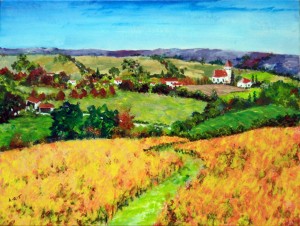Before we moved to Turkey we had an apartment on the Blv. des Pyrenees in the beautiful French town of Pau. When you drove south the road signs read like a wonderful menu, a litany of famous dishes, wines and culinary delights. Bayonne, Champagne, Camembert, Bourgogne, Evian, Dijon, Roquefort, Bordeaux, Armagnac, Ossau-Iraty ……
Turkish cuisines are regional too and although not quite as famous as their French counterparts they also represent the best and most abundant local ingredients and have a long history.
The cooking of Istanbul, Bursa, Izmir, and rest of the Aegean region shows Ottoman influences with a lighter use of spices, and a preference for rice. The cuisine of the Black Sea naturally uses fish especially the anchovy (hamsi) with Balkan and Slavic influences, and includes maize dishes. The cuisine of the southeast is famous for kebabs and dough-based desserts such as baklava and Kunefe. The cuisines of the Med are rich in vegetables, herbs, and fish while Central Anatolia has many famous specialties, such as kashkak, manti from Kayseri and gozleme (pancakes)
A specialty’s name sometimes includes that of a city or region, and often refer to the specific technique or ingredients used in that area. For example, the difference between an Urfa kebab and Adana kebab is the thickness of the skewer and the amount of chilli it contains. Urfa kebab is less spicy and thicker than adana kebab.

Lovely artwork and writing. Makes me slow down to be more observing and in love with the world.